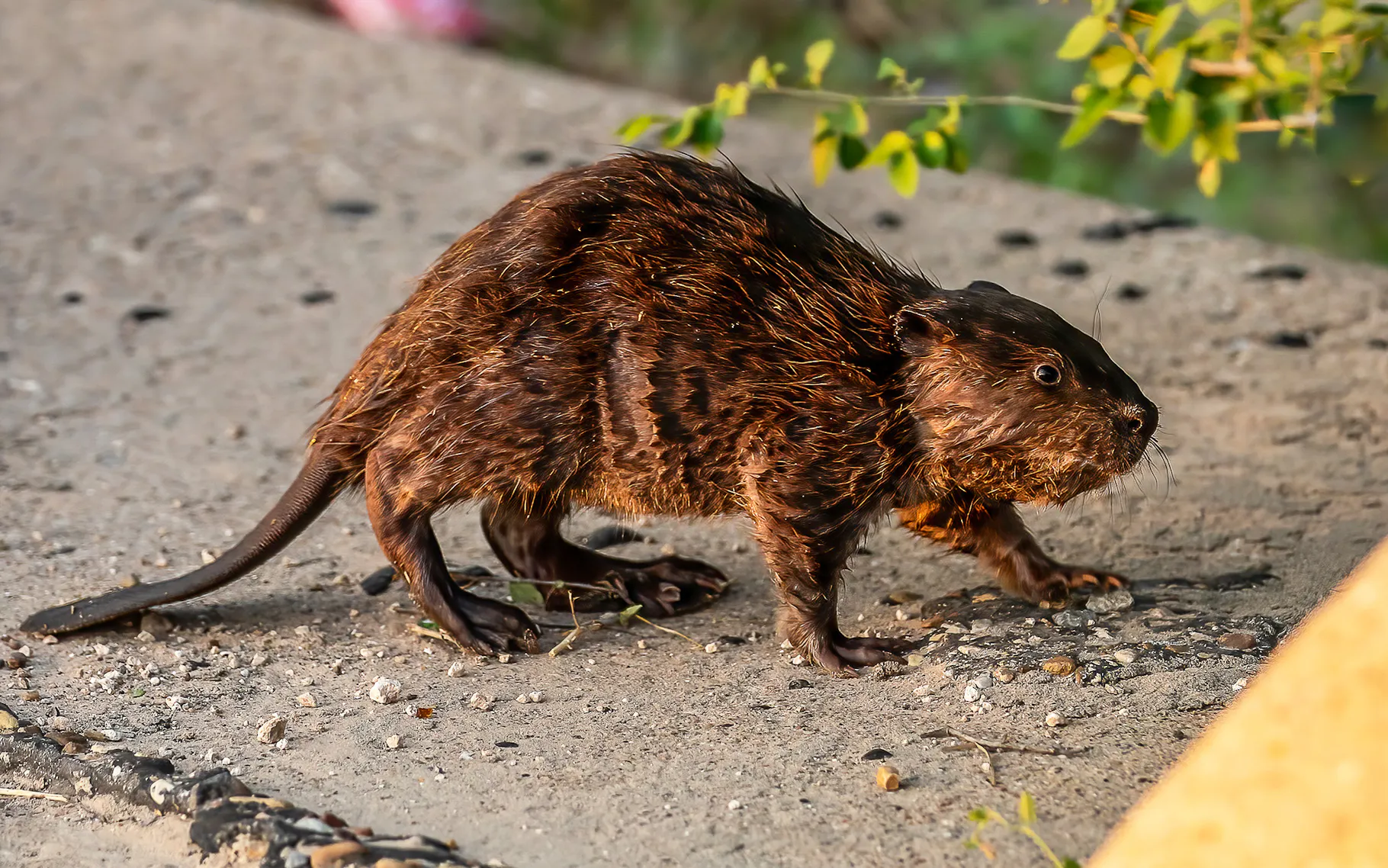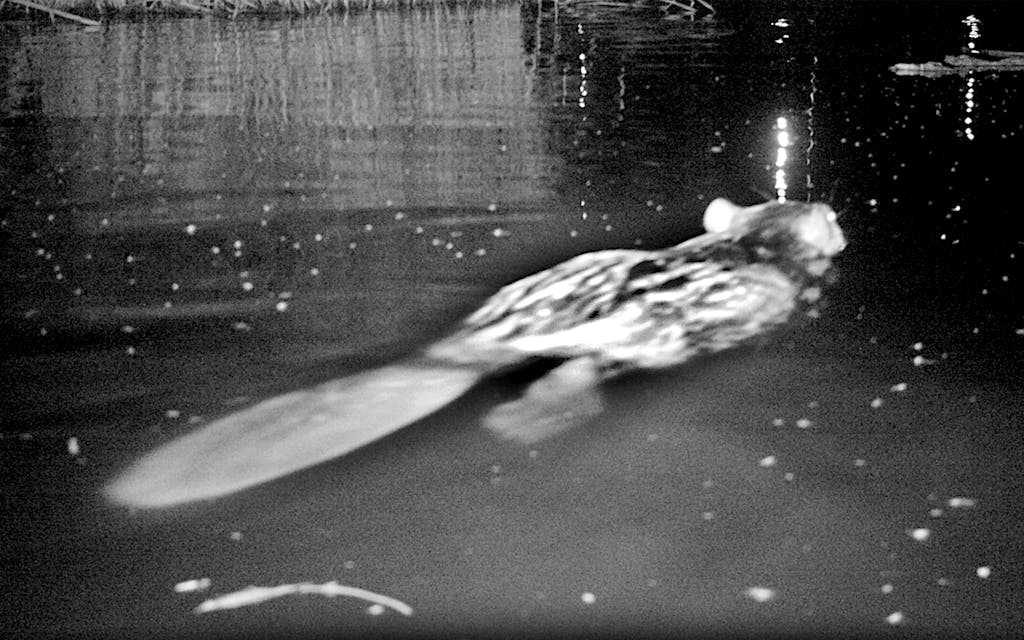5,000 Years Later, Beavers Return to the High Plains

“The Brazos is the longest river in Texas. Beavers were always found downstream. As discussed below, they are now colonizing the upper Brazos where dams have created large bodies of permanent water.
NOTE: this article was originally published to TexasMonthly.com on September 6, 2022. It was written by Peter Holley.
Centuries after they were hunted nearly out of existence, an obsessed wildlife ecologist has found evidence that the buck-toothed critters are beginning to recolonize.
In the spring of 1831, Albert Pike, a young teacher and poet, uprooted his predictable life in New England and headed west. Lacking both money and a discernible plan, Pike found himself among a group of traders in Missouri who were headed for New Mexico. Once there, he would leave Santa Fe to embark upon an expedition to the Llano Estacado, the elevated expanse of desolate grassland that covers northwest Texas and parts of eastern New Mexico. Pike was in search of beavers, whose pelts had been the obsession of European hatmakers for hundreds of years, decimating the animal’s population. He abandoned his journey and went on to become a freemason as well as a disgraced Confederate general whose Washington, D.C., statue was only recently toppled. Little did he know, the large, semi-aquatic rodents he was in search of had not made an appearance in the Lubbock area for five thousand years. His quest was a futile one.
Nearly two centuries later, another Massachusetts native and naturalist—who grew up twenty miles from Pike’s childhood home—found himself adjusting to life on the southern High Plains. Garret Langlois had lived in Vermont, Louisiana, and the Paraguayan jungle, where he’d studied large, tropical fruit bats, but he’d never set foot in Texas. That changed in 2015, when one of his academic mentors persuaded Langlois to join him at Texas Tech University and pursue his doctorate in wildlife ecology in the school’s Department of Natural Resources Management. He’d lived in remote places before, but Lubbock felt more isolated, and in some ways more unsettling, than the farthest reaches of the South American jungle, where he was subject to being eaten by a jaguar each time he ventured outdoors. “Not long after I arrived, it rained and the dust in the air turned to mud,” Langlois recalled. “You’d look up and your face would be caked in brown dirt. For someone from the forests of New England, this was like something from the end times.”
Unlike Pike before him, Langlois, whose work is focused on behavioral ecology, didn’t arrive in Lubbock looking to find beavers. Though he’s studied snakes and salamanders and has a general passion for wildlife, Langlois had never given much thought to beavers. That changed shortly after his arrival in Lubbock in 2015, when a Texas Tech biology professor and several students found a beaver carcass in Mackenzie Park, the 524-acre swath of green space on the northeast side of the city that is home to a prairie dog town and a man-made lake. Fearing the carcass was a hoax and unwilling to say with any certainty that beavers had returned to Lubbock, Langlois became obsessed with the idea of determining whether the lone beaver was a fluke or the first evidence that the animals had returned to the area. Should the latter turn out to be true, Langlois knew it would represent a shocking development, one that would captivate wildlife experts all over the country.
The fossil record shows that beavers were living in north-central Texas less than 125,000 years ago, before continuing to expand their range southwest to the New Mexico–Mexico border and into Arizona. The same record indicated that they were wiped out from the Llano Estacado by two severe droughts around 3,000 BC and never managed to return. Beavers were nearly hunted to extinction during the fur trade, which, according to Langlois, contributed to the destruction of critical wetlands that moisturized dehydrated landscapes, supported biodiversity, and lowered temperatures all over the United States. Despite recently beginning to recolonize areas such as Northern California where they were nearly wiped out, the North American beaver population is only one tenth of what it was before European settlement. Had they turned up in Lubbock’s semi-arid climate thousands of years after disappearing, remaining undetected despite being surrounded by hundreds of thousands of humans, their covert arrival would be a testament to the animal’s awe-inspiring skill and resilience. “Like people, animals are always looking for new places to expand their range and make a livelihood,” Langlois said. “But this is a tough place to colonize, especially for an animal that thrives in freshwater ecosystems. It’s dry and there’s not a lot of water here in general.”
To confirm whether beavers had returned, Langlois didn’t turn to complicated equipment. Using what little spare time he had, he began approaching strangers along the shores of Canyon Lake Number 6 in Mae Simmons Park. Like a detective working on a missing-person case, he’d ask anyone he encountered if they’d recently spotted a beaver in the area. Though rumors of alleged sightings abounded and Langlois did find one man who claimed to be a firsthand witness, he eventually realized that the only path forward was to find one of the animals himself. For months, he explored the dense wooded areas around the lake, observing subtle interactions between fauna and flora and sometimes getting down on his hands and knees to inspect potential evidence. Langlois began specifically looking for evidence of the animals’ impact on the area, keeping in mind that beavers are primarily nocturnal. When Langlois writes about this period, in this case during an exchange over email, his prose reads like that same detective grew up reading the writings of some of the great nineteenth-century American naturalists. His eye for detail is so precise and passion-filled, it manages to turn an overlooked urban park in one of the least admired regions of Texas into an enchanting wilderness:
“I walked down a slope of shortgrass prairie, into a floodplain hardwood forest, across a desiccated depressional marsh, and finally into the riparian hardwood forest. While surveying the lakeshore, I kept thinking to myself that if I were a beaver in Lubbock, this is where I’d be. Adjacent to the mouth of a rheocrene spring-fed brook, I stooped down to get a better look at the first piece of evidence that would support a hypothesis for beaver habitation in the Canyon Lakes: chewed stumps from one to three seasons past. So, they were here at one point . . . but were they still here?”
Eventually, a more complete answer would arrive in several forms: a partially collapsed tunnel opening; places where foliage had been squashed, indicating a potential entry and exit route along the water; and tree stumps that appeared to have been stripped of bark and sliced open by large incisors. The discoveries were largely consigned to one area, but Langlois found evidence of older trails and chew marks elsewhere. Despite the compelling evidence, the amply sized rodents remained frustratingly elusive. “I could’ve published a paper showing the environmental evidence and the chew marks, but, scientist or not, who is going to get excited about that?” Langlois said. “Do you want to see photos of a few chewed-up tree stumps, or do you want to see undeniable evidence of beavers being in a place they haven’t been for five thousand years?”

A North American beaver swimming in Canyon Lake Number 6. Garret D. Langlois
Langlois knew what he had to do: somehow, he’d need to capture photographic evidence of a live beaver. Using three borrowed motion-activated digital cameras, he set up what amounted to a sting operation along the bank near a beaver den that he’d discovered. It would take four months and lots of anxiety about the prospect of the expensive tree-mounted cameras being stolen for Langlois to get what he was looking for: a black and white image showing a pair of North American beavers swimming, one behind the other, in Canyon Lake Number 6, their large oval-shaped tails trailing behind. Langlois was lucky: about a day after the image was snapped, a spider built a web over the lens, rendering the camera useless.
Several years later, Langlois has seen the beavers only a handful of times, and always fleetingly, which explains his penchant for comparing them to ghosts. But he’s come to believe the animals’ elusiveness could be a form of intelligent adaptation. Unlike beavers in the Northeast, who build prodigious lodges and slap their tails on the water when people venture too close, their pioneering cousins on the Llano Estacado are colonizing with caution. They burrow underground, typically venture out after dark, and, Langlois speculates, may have chosen to hunker down near the nests of loud shoreline birds because they serve as an alarm system. “If you’re new to an area and in an urban environment and you know you’re not the most comfortable on land, wouldn’t living in a place with a bird-based alarm system be the best thing that could happen to you?” Langlois said, pointing out that scientists do know of examples of animals listening to other species to gather information and reacting accordingly. “The birds could help these beavers be even more evasive, behave more cryptically, and be harder to spot.”
After assembling evidence from nearly 100 river miles and dating back more than a decade, Langlois has concluded that beaver colonies in Lubbock can most likely be traced to colonies in the Brazos River in north-central Texas, more than 230 river miles eastward. The population likely required years to complete the journey, their arrival possibly coinciding with heavy rains during the summer of 2015. More recently, he’s discovered evidence of beaver habitation occurring intermittently from nearly all of the Canyon Lakes to roughly 50 river miles downstream. Asked how many beavers might be in Lubbock, Langlois was reluctant to speculate. “You’re asking me to guess how many hairs are on the head of a person I’ve never met,” he said.
What he’s more confident about is the opportunity for the new colonies to positively affect the city and the region. A paper showcasing his research into the beaver’s recolonization efforts in northwest Texas was recently published. For drought-stricken parts of Texas, Langlois is already thinking about whether beavers could be used to construct natural dams that assist in prairie restoration and has discussed the idea with local ranchers. He also pointed to research that links human contact with nature with greater social cohesion. Perhaps not surprisingly, the devoted naturalist thinks beavers could serve as a sort of gateway that helps more Lubbock residents engage with the natural world around them, appreciating a landscape they may have overlooked. As evidence, he cites himself. “I hadn’t felt connected to Texas and especially not West Texas until I began studying these animals,” Langlois said. “I didn’t feel like I had a place here. Now a week doesn’t go by . . . without me driving or hiking through the canyon lakes to spend time in the woods that I’ve come to know through the beaver.”
